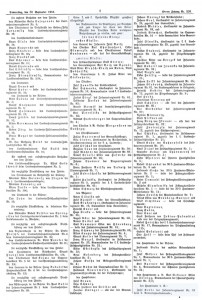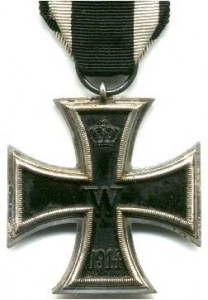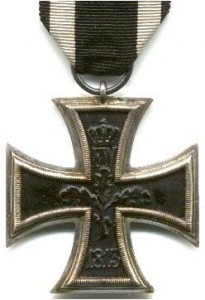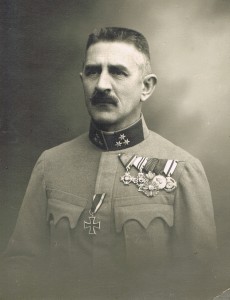The Prussian Iron Cross is a symbol in the form of a cross, typically in black with a white or silver outline, that originated after 1219 when the Kingdom of Jerusalem granted the Teutonic Order the right to combine the Teutonic Black Cross placed over the silver Cross of Jerusalem. The military decoration called the Iron Cross was instituted in three classes by Frederick William III during the Napoleonic Wars on 10 March 1813, the birthday of the late Queen Louise of Prussia. It was recommissioned during the Franco-Prussian War and again during World War I.
The Iron Cross, 2nd class, was made up of a cross pattée of black varnished iron with a silver border, measuring 42.89 x 46.58 mm and weighing 13.15 g. The obverse of the original cross was plain and the reverse showed a crown and thereunder the initials FW, a sprig of three oak leaves and the year 1813. The reverse later became the obverse, but reverted to the reverse once more during World War I, when the initially plain obverse was decorated with a crown, the then Emperor William II’s initial and the date 1914. It was suspended from a black ribbon with white outer stripes and worn alone in a button hole.
During the First World War approximately five million 2nd class Iron Crosses were awarded to the armed forces for bravery or for successful war planning. Captain Josef Kolbe was awarded his in October 1915.
 Wiener Zeitung, 30.09.1915 |  |  |  Iron Cross (showing reverse) |
Sources:
http://en.wikipedia.org/wiki/Iron_Cross
http://de.wikipedia.org/wiki/Eisernes_Kreuz
AustriaN Newspapers Online: http://anno.onb.ac.at
